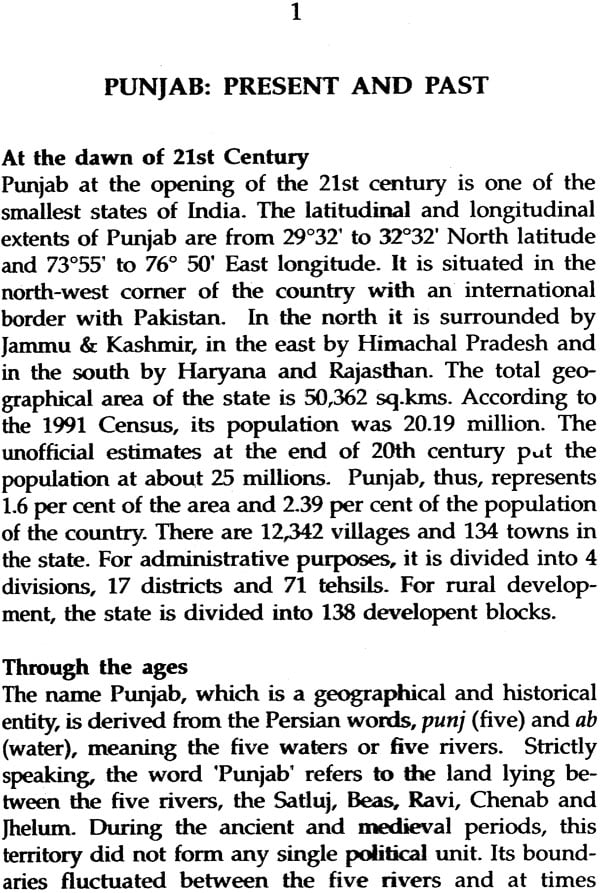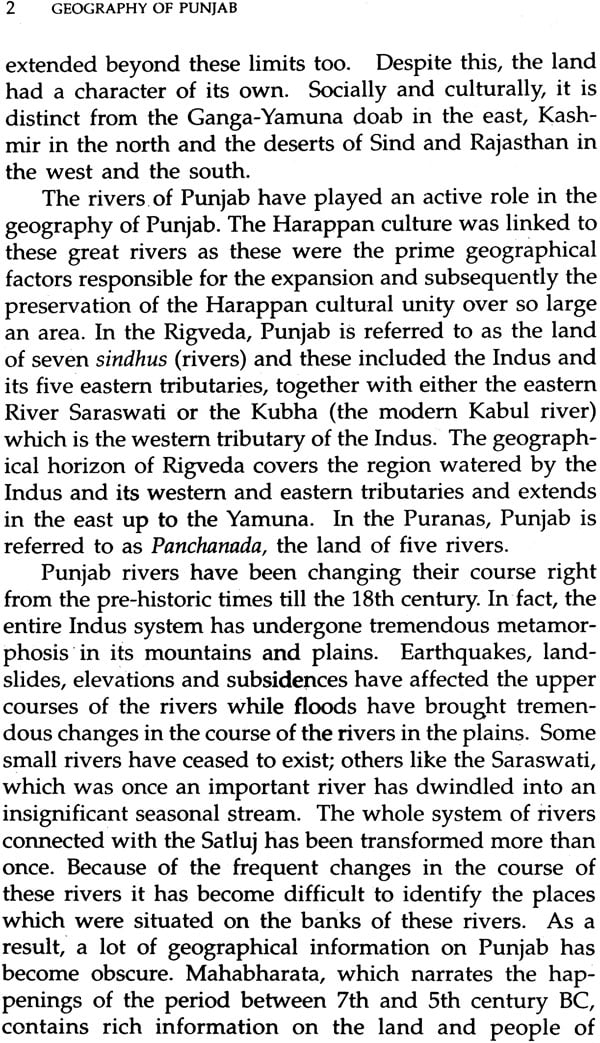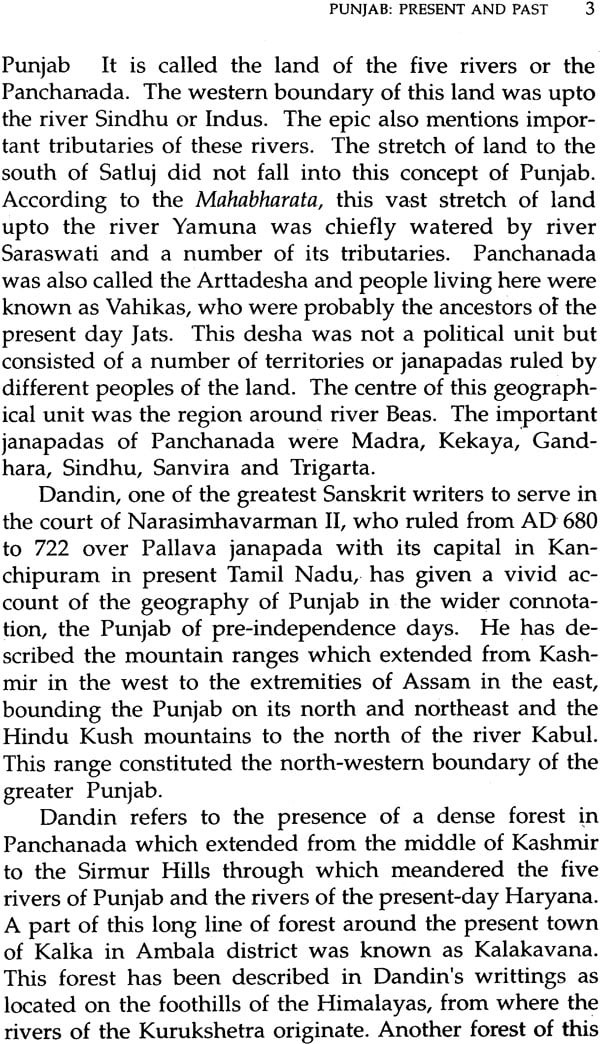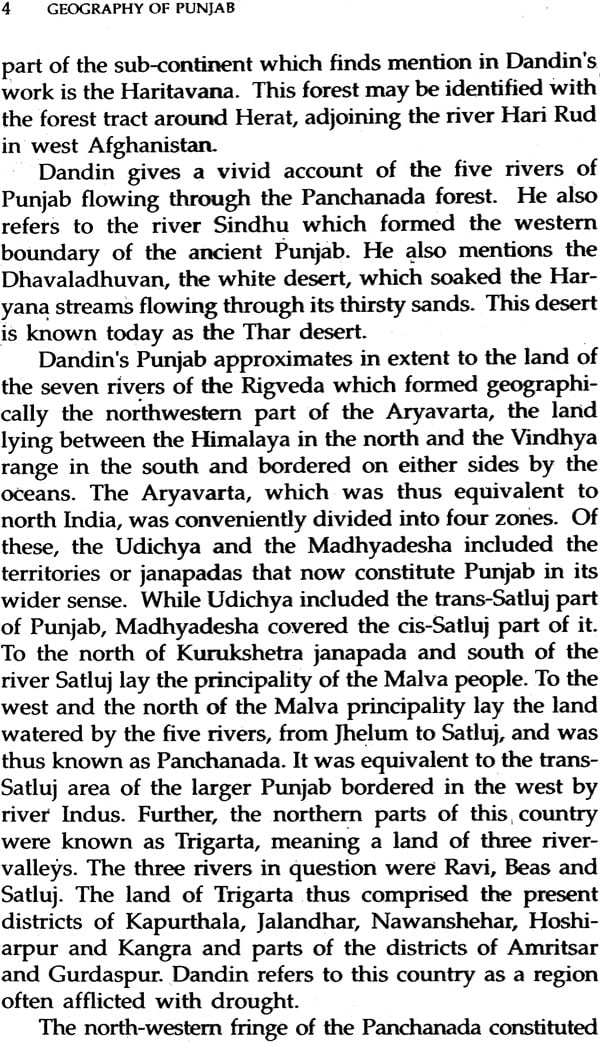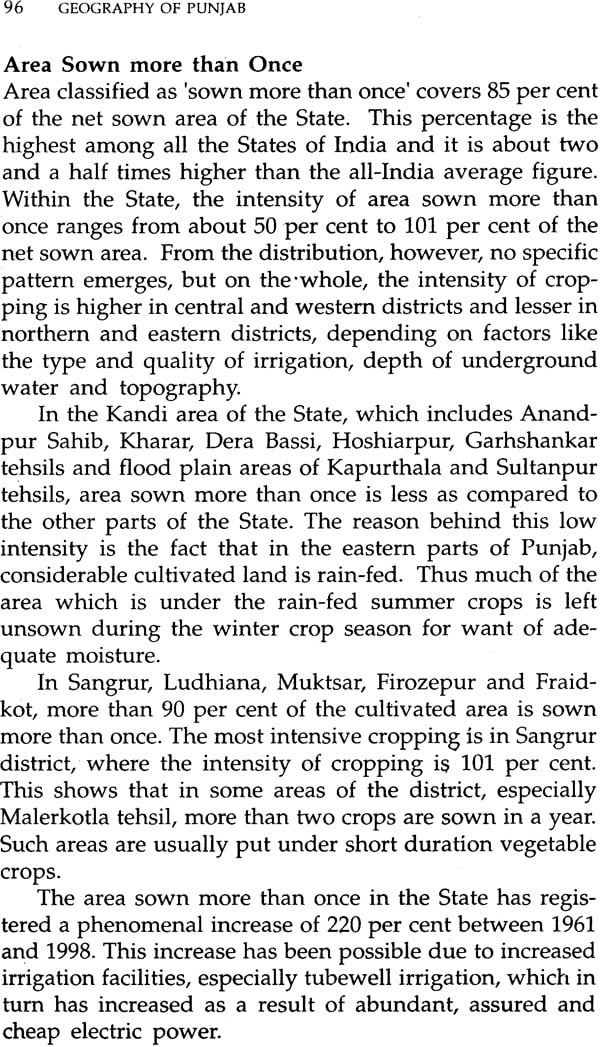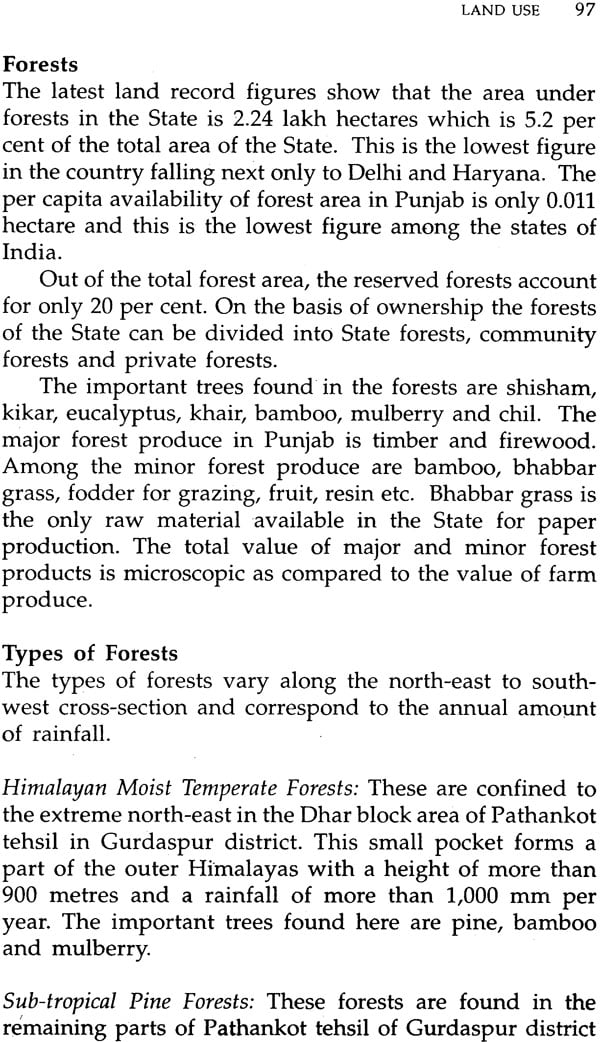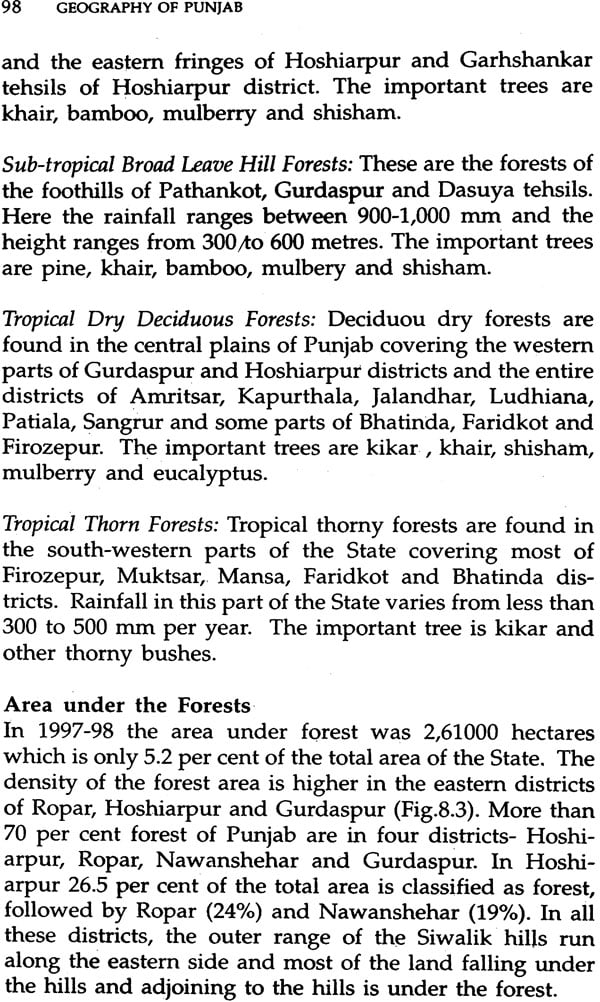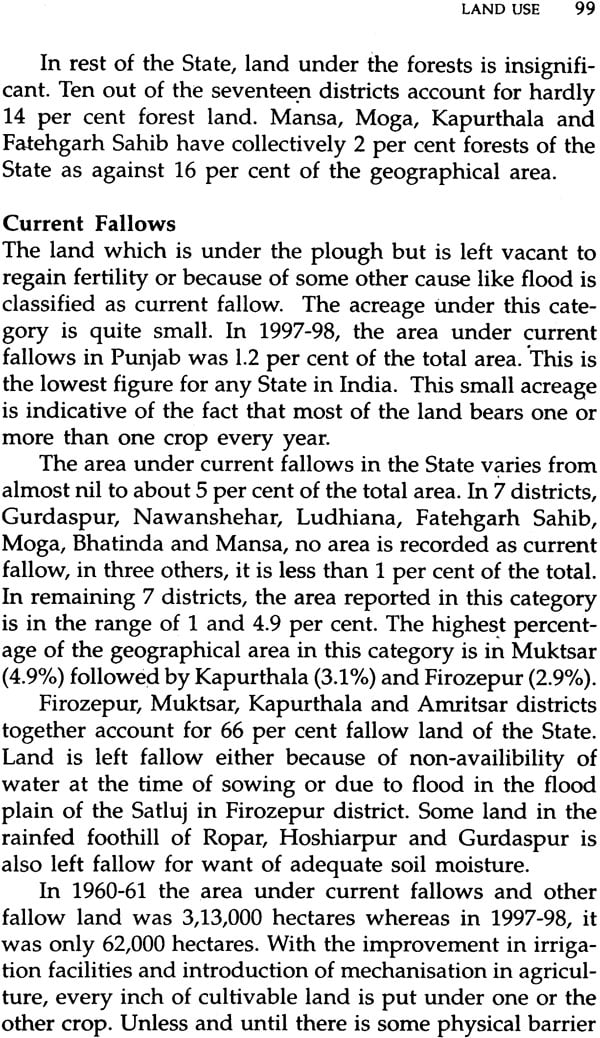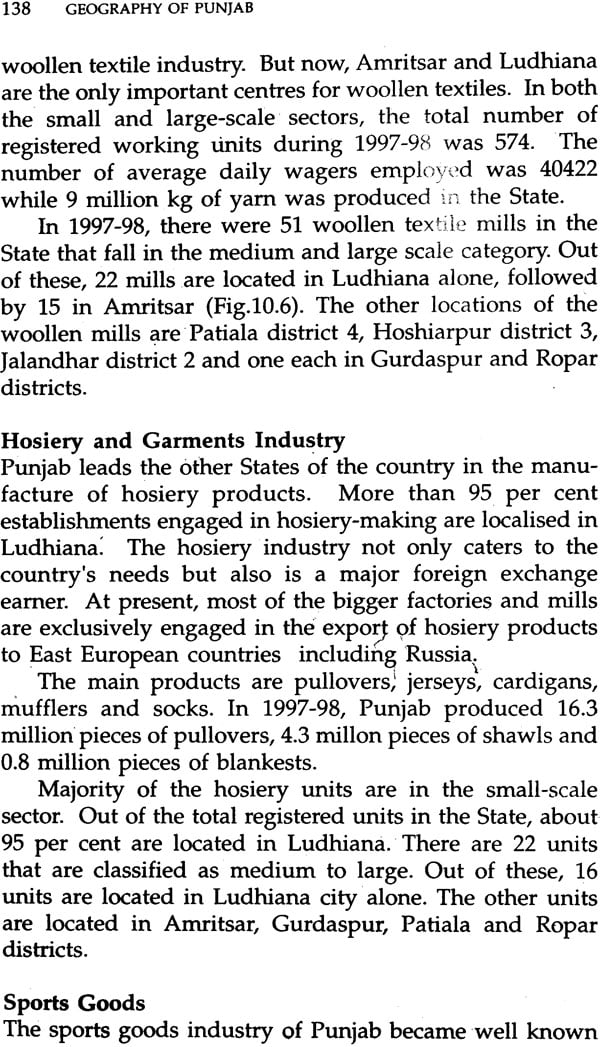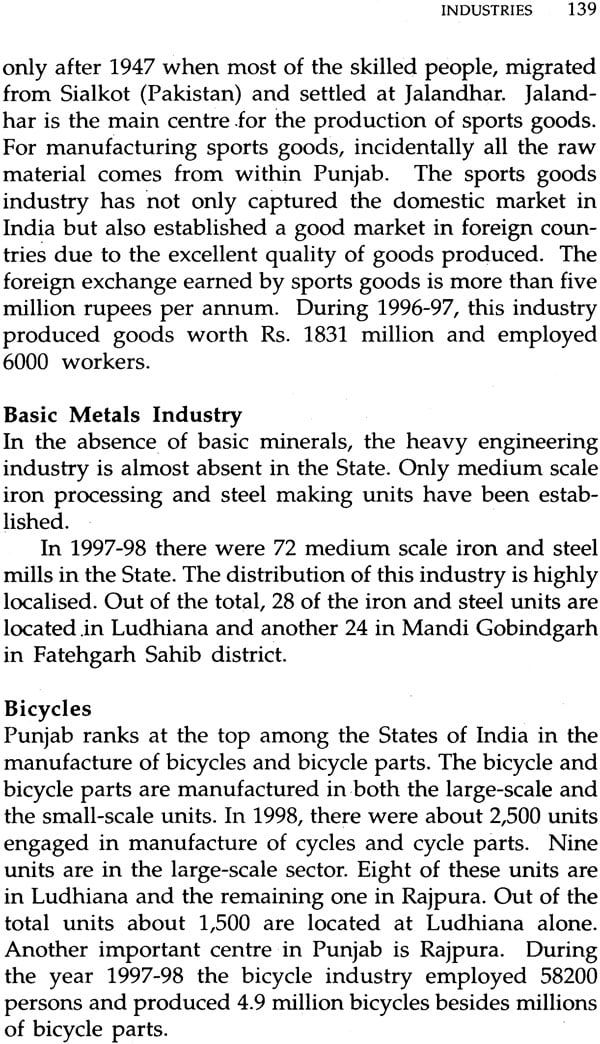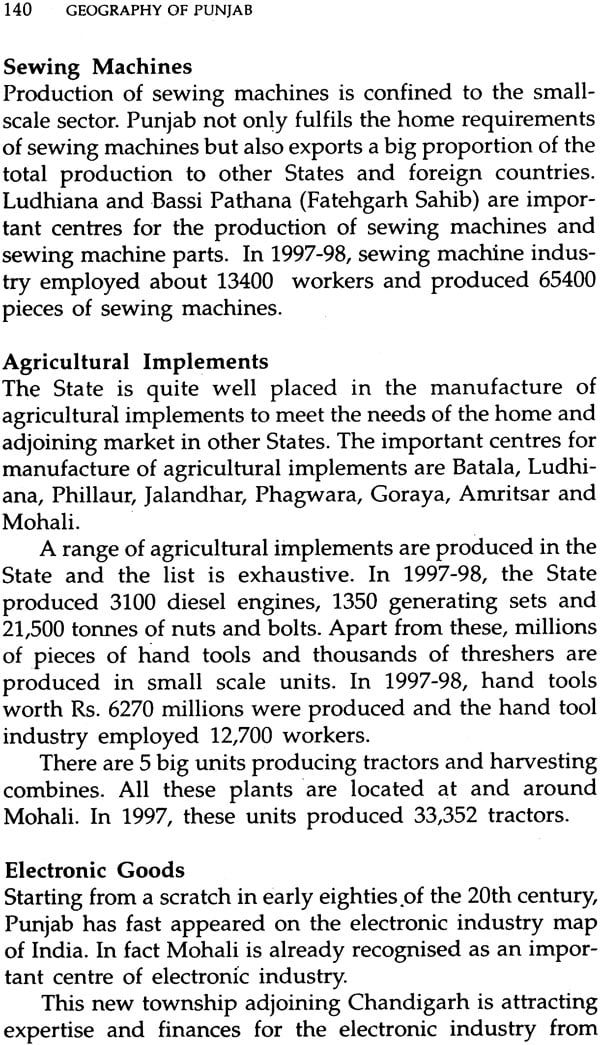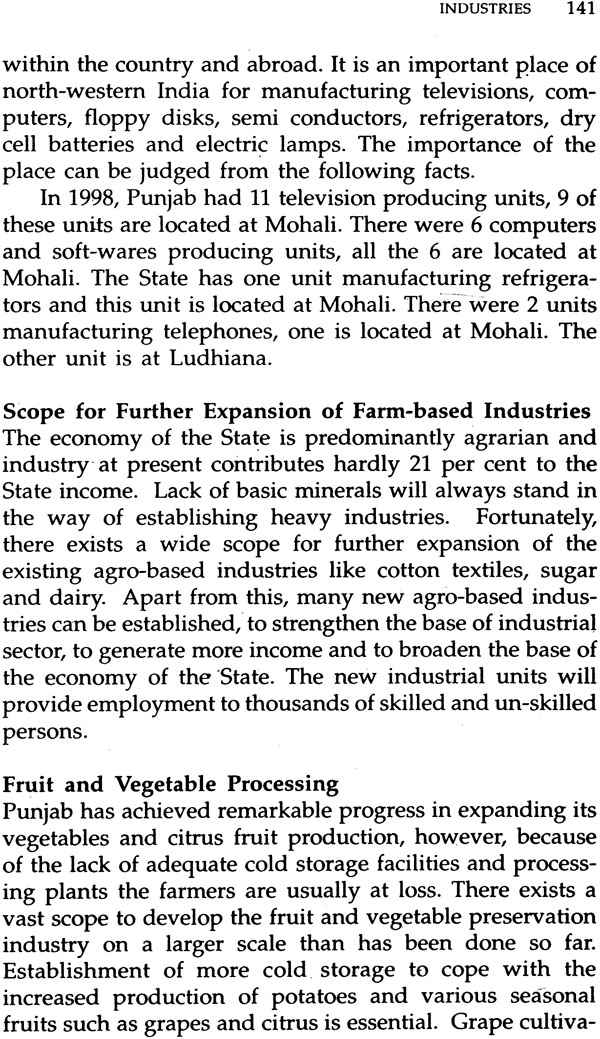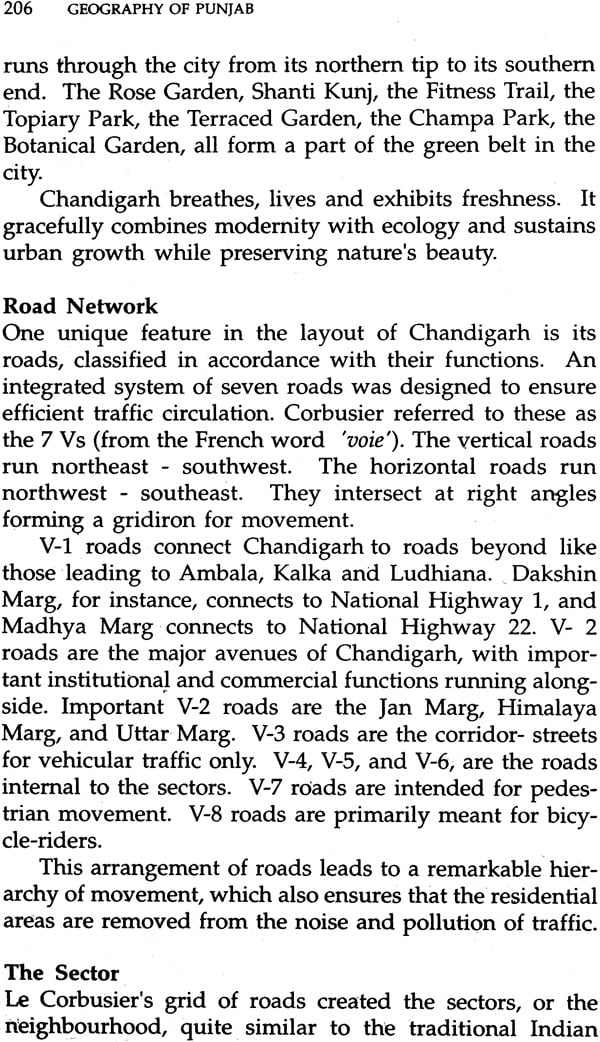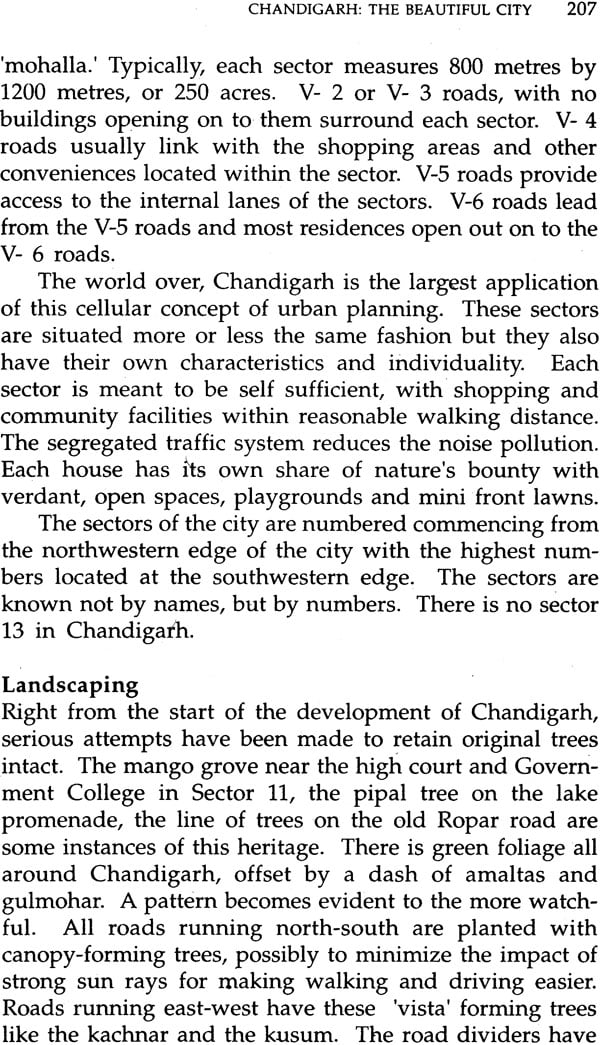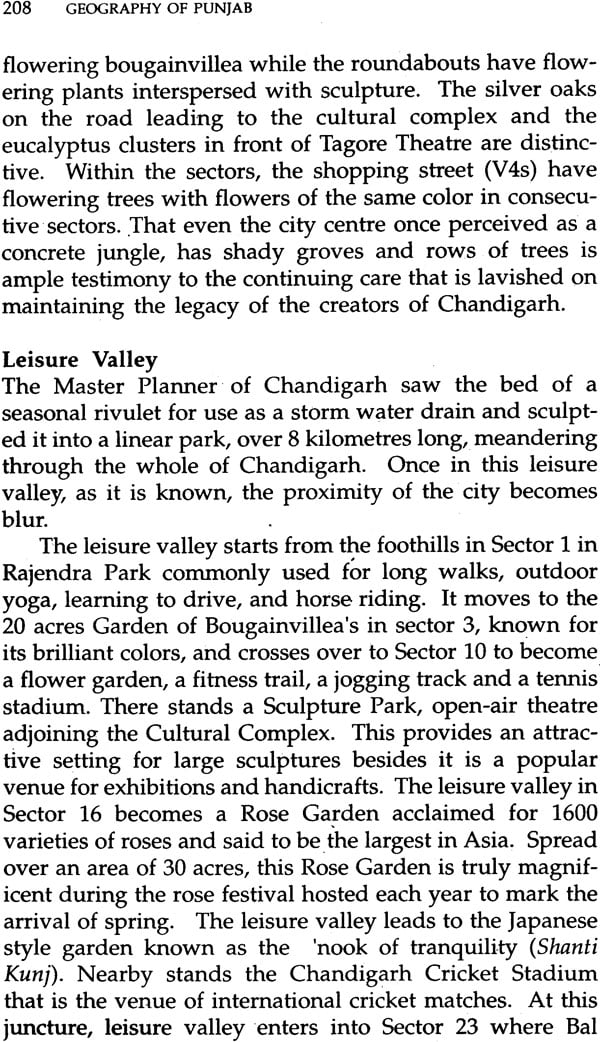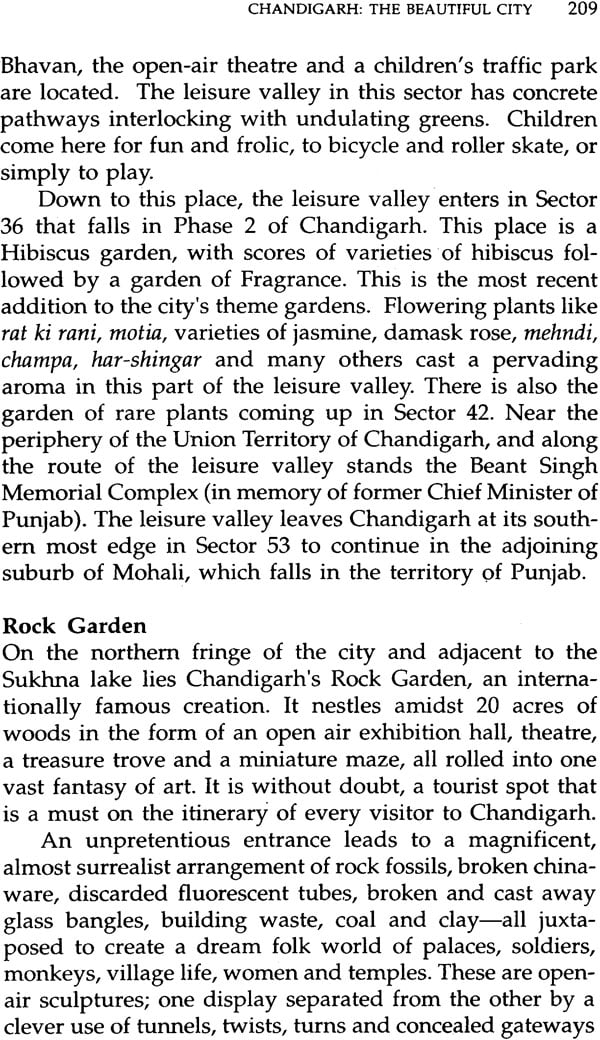
Geography of Punjab
Book Specification
| Item Code: | NAF659 |
| Author: | Harpal Singh Mavi and D S Tiwana |
| Publisher: | National Book Trust, India |
| Language: | English |
| Edition: | 2022 |
| ISBN: | 9788123701998 |
| Pages: | 225 (16 Color and 7 B/W Illustrations) |
| Cover: | Paperback |
| Other Details | 8.5 inch x 5.5 inch |
| Weight | 280 gm |
Book Description
The book provides a comprehensive overview of physical features, climates, agro-climatic regions, soils and land use, main crops, irrigation, industries, transportation and other facets of Punjab. A chapter on Chandigarh has been added in the revised edition. The book also takes a close look at rich socio-cultural heritage of the state.
H S Mavi is a renowned Agro meteorologist. He has taught at Punjab Agricultural University. He has also worked with New South Wales Department of Agriculture, Australia. Author of six books and several technical papers, he has received Punjab State Award I Science & Technology, M S Randhawa Best Book award etc.
D S Tiwana is a seasoned academic, associated with Punjab Agricultural University. He has written several research papers and articles.
The land and people of Punjab have a special place in India and rightly deserve a big exposure in other parts of Indian and aboard.
The land of the five rivers bears the imprints of several ancients and perhaps the oldest civilizations of the world. This land has the footprints of some of the greatest tyrants of the medieval ages and it has witnesses some of the greatest human tragedies in the history of mankind. This is a land of fertile soils through which flow the perennial revivers. It is the granary of India and is a classical example of agricultural development, irrigation network, per unit area crop productivity and overall rural development not found in most other parts of India.
The people of Punjab are the descendants of various racial and sub-racial groups. The mingling of these groups gave rise to a mixed culture that is unorthodox, relaxed and different from the regions in the east. The people of Punjab are very hardworking, adventurous and above all farmers unsurpassed. They are ever ready t move to the greener pastures in pursuit of prosperity.
The book revised by Dr. Harpal Singh Mavi gives an excellent exposure to this land, to its soil, to its waters and to the development and utilization of its natural resources. The book gives a chronologic developments like the rural electrification , rural link roads, small and medium scale industries and how theses have brought a revolution in the life-style of Punjab in general and rural Punjab in particular.
There are millions of Punjab residing foreign countries, many of them have not visited their place of birth since long and are not aware of the socio-economic development back at home. Hundreds of thousands of young persons of Punjabi origin who are born outside Punjab have never visited the place of their origin and have heard about that from tier parents and grandparents. This book is a handy source to update them about Punjab-the past and the present. They will have the information and data about Punjab that will make them feel happy about the land and people of their origin. A chapter on Chandigarh has added another value to the book. After reading this chapter, who would not like to go and see the beautiful city.
Everything changes and nothing stays the same forever. This is truer of people, their activities and the economy. Technology is improving at a fast rate, prices are rising, good places are going bad and bad places are taking a turn for the better. Today’s developments become old by tomorrow morning. In this dynamic world people want the latest information and updates on the old. This is truer with the literature or information that is based on factual data. I have revised the Geography of Punjab to keep this need in view by making it fresh with latest facts and new information.
The book has been revised at the turn off the century, hence the data and information given in the book will become a base for comparison in the future. Most of the data cited is from the latest published records available till the first quarter of the first year of the 21st century. I have deleted outdated topics and have described the others based on latest and new information. Instead of putting the data in tables, in majority of chapters, I have put those in illustrative charts to generate more interest of the readers and for making temporal and spatial comparisons at a glance.
Chandigarh is a union territory and technically, it is not a part of Punjab at this moment. However, it is the capital of Punjab and Haryana. Being capital of Punjab and because the city is so different from other cities of India, Chandigarh deserves a special place in any geographical essay on northwestern India. I have added a Chapter on Chandigarh so that readers could make a mental picture of the uniqueness of this city even without visiting it.
To revise the book on the Geography of Punjab while working in Australia was an excitement and a challenge to me. Exciting in the sense that all through the year when I was busy with this work, I had feeling like sitting at my home an among my own people in Punjab. It was a challenge in the sense that I was sitting far away from all the data sources. For every nut and bolt I needed to complete the work, I had to send numerous requests back to Punjab for each small and big piece of information. There was no way for me to meet this challenge and complete the work without help from my friends Mr. K. L. Kataria. Dr. Om Parkash Jhorar, Dr. G. S. Mahi, Dr. G. S. Bains, Mr. Manmohan Singh and Mr. C. S. Sandhu, all from Punjab Agricultural university. I am grateful to them for keeping a continuous flow of data and other information that I needed at the cost of their time and resources.
| Foreword | ix | |
| Preface | 1 | |
| 1 | Punjab: Punjab and Past | 20 |
| 2 | Physical Features | 34 |
| 3 | Climate | 47 |
| 4 | Soils | 54 |
| 5 | Agro climatic Regions | 67 |
| 6 | Electric Power | 83 |
| 7 | Irrigation | 94 |
| 8 | Land Use | 103 |
| 9 | Main Crops | 131 |
| 10 | Industries | 151 |
| 11 | Transportation | 169 |
| 12 | Population | 200 |
| 13 | Chandigarh: The Beautiful City | 214 |
| References and Further Readings |
